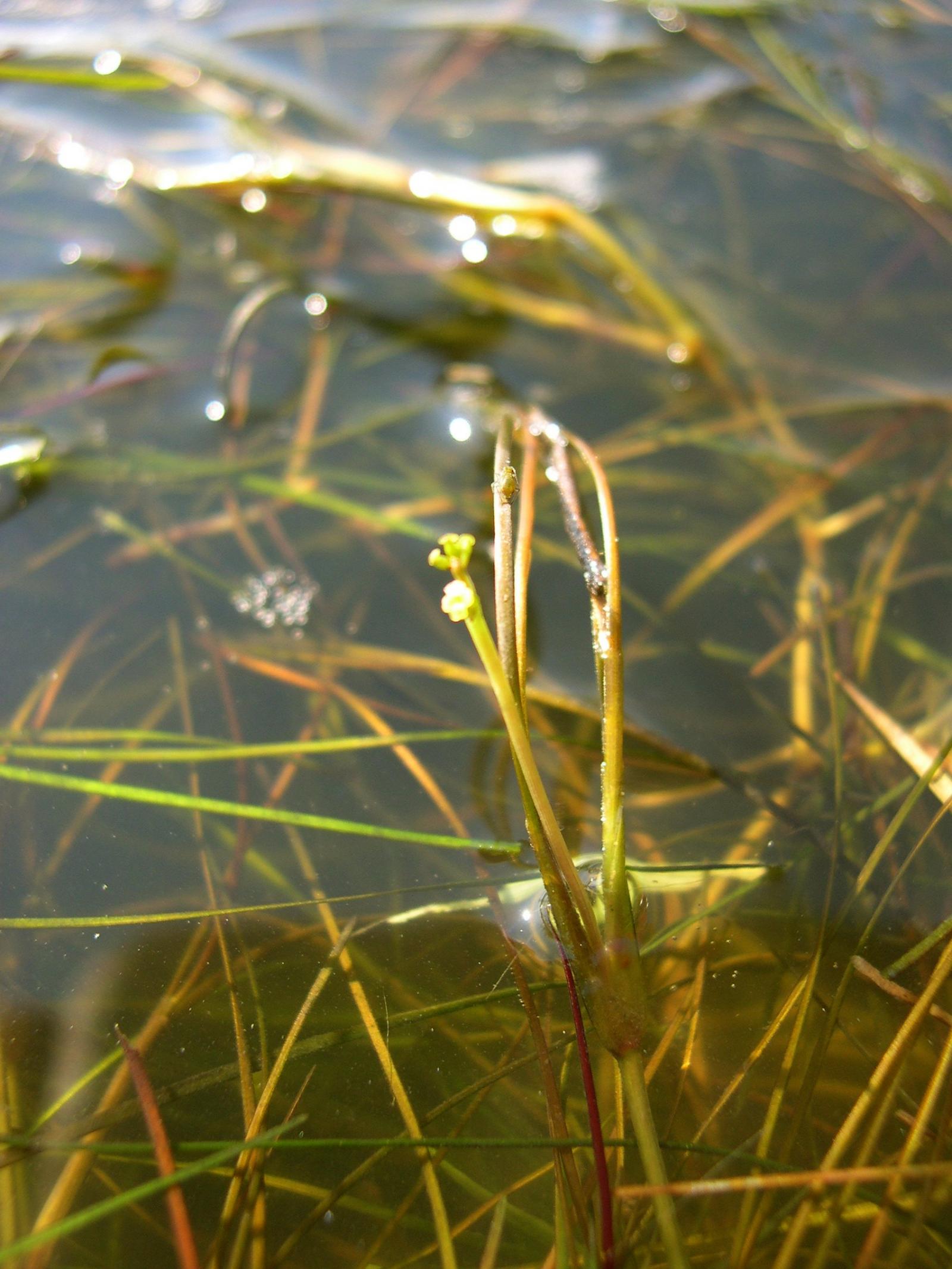
|
Family: Ruppiaceae |
Herbs, rooting at proximal nodes. Leaves: blade entire proximally, minutely serrulate distally, apex ± obtuse to acute; veins 1. Inflorescences fewer than 20-flowered, at first enclosed by sheathing leaf bases. Flowers bisexual; anthers 2-loculed, locules separated by broad connective; stipe elongating after anthesis. Fruits beaked, long-stipitate; beak erect or slightly recurved. Considerable confusion exists about North American taxa of Ruppia. Two distinct forms, along with several intermediates, are known: one with short peduncles with four or fewer spirals and another with long peduncles with five or more coils (often many more). Usually, those with few coils are in brackish waters near the coast, whereas those with many coils are inland, often in lakes that have high mineral contents. The forms have been considered variants variants of one species, R. maritima (M. L. Fernald and K. M. Wiegand 1914); more recently they have been accepted at species level (R. F. Thorne 1993). I am adopting Thorne´s concepts.
Characters of the family. Gleason, Henry A. & Cronquist, Arthur J. 1991. Manual of vascular plants of northeastern United States and adjacent Canada. lxxv + 910 pp. ©The New York Botanical Garden. All rights reserved. Used by permission. |
This project was made possible in part by the Institute of Museum and Library Services [MG-70-19-0057-19].
Powered by Symbiota



